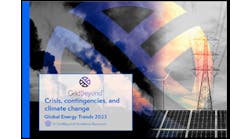The most read Microgrid Knowledge articles for the first half of 2019 tell the story of an industry attracting larger players and building more sophisticated projects, particularly for communities and commercial and industrial facilities.
Renewables and energy storage continue to dominate the discussion. Fuel cells appear to be gaining traction. Use of energy-as-a-service is on the rise as a popular customer financing model.
Here are the 10 most read articles from Jan. 1 to July 1, 2019
Top 10 Microgrid Knowledge articles first half 2019
1. Goodbye to Arguments Against Renewables? New Studies Find them as Reliable and Cheap as Fossils
Can renewables cost less than fossil fuel generation? And are they as reliable? It appears so, especially when they are coupled with a suite of distributed energy resources (DERs), such as virtual power plants and demand response. New reports by Energy Innovation Policy and Technology and the Rocky Mountain Institute (RMI) lay out the argument.
2. Puerto Rico’s Utility Calls for Making the Island into Eight Minigrids
Puerto Rico’s utility is calling for segmenting the island’s electrical grid into eight minigrids, myriad microgrids and installing more energy storage than is now in all 50 US states. The concept is outlined in a draft integrated resource plan (IRP) that the Puerto Rico Electric Power Authority (PREPA).
3. Why Jigar Shah is Now Putting Money Behind Fuel Cells & Other Clean Resources
Jigar Shah is best known as the founder of SunEdison, a company that helped propel solar on its meteoric growth path with “no money-down” solar financing. But now he’s putting his money and passion behind fuel cells and other clean resources to move the “resource revolution” forward and help the banking community feel more comfortable with these technologies
4. Schneider and Carlyle Form New Venture to Pursue Fast-Growing Energy Infrastructure and Microgrid Market
The Carlyle Group and Schneider Electric today announced a new joint venture, AlphaStruxure, to pursue what they see as a $1 trillion underinvestment in US infrastructure and a fast-growing market for microgrids. The venture is launching with a crown-jewel project: New York Gov. Andrew Cuomo’s $13 billion JFK Airport modernization, which incorporates multiple microgrids to move the facility toward 100% renewable energy within the next decade.
5. Newly Opened, JFK’s TWA Hotel is Always Grid Independent
The irony could not be any more conspicuous: the vintage Trans World Airline, known as TWA, ceased to exist nearly two decades ago. But a new hotel and conference center has formed around what had been the TWA terminal at New York’s JFK Airport — one that focuses on ultra modern energy technologies: a microgrid, on site electric generation and battery storage.
6. Bloom Energy Expands its Market Footprint with Two New Commercial and Industrial Microgrids
Bloom Energy today announced installation of two commercial and industrial microgrid projects, one for Silicon Valley software company Extreme Networks and the second for Pennsylvania manufacturer II-VI. The projects are the latest in a recent succession of microgrids developed by the California fuel cell company — 80 microgrids in all with 65 percent coming in the last couple of years.
By Elnur/Shutterstock.com
7. Here’s What’s Driving Energy Storage Markets — and How to Benefit
Energy storage markets are growing quickly, driven by regulations, demand charges, plus utilities’ need to integrate solar into the grid and avoid building new peaking power plants.
8. Tesla, Fluence and Other Energy Storage System Integrators Playing Bigger Role on Green Grid
Energy storage system integrators play an increasingly important — and shifting — role as more renewable energy is added to the grid, according to a new Navigant Research report. Integrators design, build and operate large, grid-scale energy storage systems. Think Tesla and Fluence.
9. Eversource Takes Local Energy Concept to New Level with New Hampshire Microgrid Plan
Eversource plans to develop an energy storage microgrid in New Hampshire that takes the local energy concept to a new level by pairing the microgrid with a bring-your-own-device program. The project also offers an example of a path for utilities to develop microgrids when state rules allow utility ownership of energy storage
10. Understanding the Energy-as-a-Service Model for Microgrids
Almost 25 percent of microgrids today use the energy-as-a-service model, also known as EaaS. In this selection from a new special report from Microgrid Knowledge and Schneider Electric, we break down this new model that aims to make it easier to develop and operate microgrids.
Would you like to have Microgrid Knowledge articles delivered to your mailbox twice weekly free of charge? Subscribe to the Microgrid Knowledge newsletter.







